 W
WAkshaya Tritiya, also known as Akti or Akha Teej, is an annual Hindu and Jain spring festival. It falls on the third tithi of the bright half of the month of Vaisakha. It is regionally observed as an auspicious day by Hindus and Jains in India and Nepal, as it signifies the "third day of unending prosperity".
 W
WAnant Chaturdashi / Ganesh Visarjan is a festival observed and celebrated by Jains and Hindus.
 W
WBhai Dooj, Bhaubeej, Bhai Tika or Bhai Phonta is a festival celebrated by Hindus on the second lunar day of Shukla Paksha in the Vikram Samvat Hindu calendar or of Shalivahan Shaka calendar month of Kartika. It is celebrated during the Diwali or Tihar festival and Holi festival. The celebrations of this day are similar to the festival of Raksha Bandhan. On this day, brothers give gifts to their sisters. In the southern part of the country, the day is celebrated as Yama Dwitiya. In the Kayastha community, two Bhai Doojs are celebrated. The more famous one comes on the second day after Diwali. But the lesser-known one is celebrated a day or two after Diwali. In Haryana, a ritual also followed, a dry coconut with klewa tied along its width for worshipping is also used at the time of doing aarti of a brother.
 W
WCheti Chand is a festival that marks the beginning of the Lunar Hindu New Year for Sindhi Hindus. The date of the festival is based on the lunar cycle of the lunisolar Hindu calendar, falling on the first day of the year, in the Sindhi month of Chet (Chaitra). It typically falls in late March or early April in the Gregorian calendar on or about the same day as Gudi Padwa in Maharashtra and Ugadi in other parts of the Deccan region of India.
 W
WDatta Jayanti, also known as Dattatreya Jayanti, is a Hindu festival, commemorating the birth day celebration of the Hindu Deity Dattatreya (Datta), a combined form of the Hindu male divine trinity of Brahma, Vishnu and Shiva.
 W
WDiwali is a festival of lights and one of the major festivals celebrated by Hindus, Jains, Sikhs and some Buddhists, notably Newar Buddhists. The festival usually lasts five days and is celebrated during the Hindu lunisolar month Kartika. One of the most popular festivals of Hinduism, Diwali symbolizes the spiritual "victory of light over darkness, good over evil, and knowledge over ignorance". The festival is widely associated with Lakshmi, goddess of prosperity, with many other regional traditions connecting the holiday to Sita and Rama, Vishnu, Krishna, Yama, Yami, Durga, Kali, Hanuman, Ganesha, Kubera, Dhanvantari, or Vishvakarman. Furthermore, it is, in some regions, a celebration of the day Rama returned to his kingdom Ayodhya with his wife Sita and his brother Lakshmana after defeating Ravana in Lanka and serving 14 years of exile.
 W
WFestival of Chariots refers to the Ratha Yatra festivals run by the International Society for Krishna Consciousnesss (ISKCON). The main event is a chariot procession through the streets. The procession may then be followed by performing arts presentations on the stage and visiting various booths encamped at a park site. The festivals involve chants, the arts, music, and free vegetarian feasts that can be seen over the world but specifically in the United States. ISKCON, commonly referred to as Hare Krishna is a branch of Hindu religiosity. ISKCON have used the practice of Hindu festivals as an important element of Hare Krishna expression, and is a recognisable feature of their appearance in the public realm. Kirtan is an element that is common to all ISKCON festivals. Kirtan is a process of musical worship, that is accessible for group participation and as described by Edwin Bryant as “Krishna in vibratory form”. The practice of kirtan are melodies, mantras, spiritual texts that proclaim God's name in his many forms. The ‘Festival of India’ is the International society for Krishna consciousness conveying Indian expression in the global sphere.
 W
WGanesh Chaturthi, also known as Vinayaka Chaturthi, or Vinayaka Chaviti is a Hindu festival celebrating the arrival of Lord Ganesh to earth from Kailash Parvat with his mother Goddess Parvati/Gauri. The festival is marked with the installation of Lord Ganesh's clay murtis privately in homes and publicly by Shri Bal Gangadhar Tilak popularly known as Lokmanya Tilak in Pune in the year 1893 on elaborate pandals. Observations include chanting of Vedic hymns and Hindu texts such as, prayers and vrata (fasting). Offerings and prasāda from the daily prayers, that are distributed from the pandal to the community, include sweets such as modaka as it is believed to be a favourite of Lord Ganesh. The festival ends on the tenth day after start, when the idol is carried in a public procession with music and group chanting, then immersed in a nearby body of water such as a river or sea, called visarjan.. In Mumbai alone, around 150,000 statues are immersed annually. Thereafter the clay idol dissolves and Ganesh is believed to return to Mount Kailash to Parvati and Shiva. The festival celebrates Lord Ganesh as the God of New Beginnings and the Remover of Obstacles as well as the god of wisdom and intelligence and is observed throughout India, especially in the states such as Maharashtra and Goa. Ganesh Chaturthi is also observed in Nepal and by the Hindu diaspora elsewhere such as in Australia, New Zealand, Canada, Singapore, Malaysia, Trinidad and Tobago, Guyana, Suriname, other parts of the Caribbean, Fiji, Mauritius, South Africa, United States, and Europe. In the Gregorian calendar, Ganesh Chaturthi falls between 22 August and 20 September every year.
 W
WGanesh Jayanti (literally "Ganesha's birthday", also known as Magha shukla chaturthi, Tilkund chaturthi, and Varad chaturthi, is a Hindu festival. This occasion celebrates the birth day of Ganesha, the lord of wisdom. It is a popular festival particularly in the Indian state of Maharashtra and it is also celebrated in Goa held during the shukla paksha chaturthi day in the month of Maagha as per almanac, which corresponds to the Gregorian calendar month of January/February. In 2021, Shri Ganesh Jayanti falls on 15 February.
 W
WGovardhan Puja, also known as Annakut or Annakoot, is a Hindu festival in which devotees worship Govardhan Hill and prepare and offer a large variety of vegetarian food to Krishna as a mark of gratitude. For Vaishnavas, this day commemorates the incident in the Bhagavata Purana when Krishna lifted Govardhan Hill to provide the villagers of Vrindavan shelter from torrential rains. The incident is seen to represent how God will protect all devotees who take singular refuge in him. Devotees offer a mountain of food, metaphorically representing the Govardhan Hill, to God as a ritual remembrance and to renew their faith in taking refuge in God. The festival is observed by most of Hindu denominations all over India and abroad.
 W
WGudhi Padwa is a spring-time festival that marks the traditional new year for Marathi and Konkani Hindus, but is also celebrated by other Hindus as well. It is celebrated in and around Maharashtra, Goa state& the union territory of Damaon on the first day of the Chaitra month, to mark the beginning of the new year according to the lunisolar method of the Hindu calendar. Padava or paadvo comes from the Sanskrit word pratipada, which is the first day of a lunar fortnight. The spring festival is observed with colourful floor decorations called rangoli, a special Gudhi dvaja, street processions, dancing& festive foods.
 W
WGuru Nanak Dev Ji Gurpurab, also known as Guru Nanak's Prakash Utsav and Guru Nanak Dev Ji Jayanti, celebrates the birth of the first Sikh guru, Guru Nanak. One of the most celebrated Sikh gurus and the founder of Sikhism, Guru Nanak Dev is highly revered by the Sikh community. This is one of the most sacred festivals in Sikhism, or Sikhi.
 W
WGuru Purnima (Poornima) is a tradition dedicated to all the spiritual and academic Gurus, who are evolved or enlightened humans, ready to share their wisdom, based on Karma Yoga. It is celebrated as a festival in India, Nepal and Bhutan by Hindus, Jains and Buddhists. This festival is traditionally observed to honour one's chosen spiritual teachers or leaders. It is observed on the Full Moon day (Purnima) in the Hindu month of Ashadha (June–July) as it is known in the Hindu Calendar. The festival was revived by Mahatma Gandhi to pay tribute to his spiritual guru, Shrimad Rajchandra. It is also known as Vyasa Purnima for it marks the birthday of Veda Vyasa, the sage who authored the Mahabharata and compiled the Vedas.
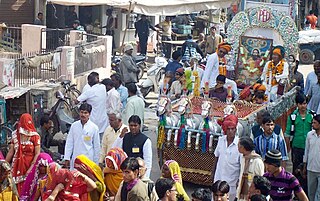 W
WGuru Ravidass Jayanti" is the birthday of Guru Ravidas, celebrated on Magh Purnima, the full moon day in the month of Magh month. It is the annual focal point for the Ravidassia religion. People across countries celebrate this special occasion in India. Also, devotees take a holy dip in the river to perform rites. The 2020 date for the Jayanti was February 9, and the 2021 date will be February 27.
 W
WHanuman Jayanti is a Hindu religious festival that celebrates the birth of Hindu God Hanuman, who is immensely venerated throughout India and Nepal. This festival is celebrated on different days in different parts of India. In most states of India, the festival is observed either in Chaitra or In Karnataka, Hanuman Jayanti is observed on Shukla Paksha Trayodashi during Margashirsha month. The day is popularly known as Hanuman Vratam or in Vaishakha, while in a few states like Kerala and Tamil Nadu, it is celebrated in Dhanu.
 W
WHoli is a popular ancient Indian festival, also known as the "Festival of Love", the "Festival of Colours" and the "Festival of Spring". The festival celebrates the eternal and divine love of Radha Krishna. It also signifies the triumph of good over the evil, as it celebrates the victory of Vishnu as Narasimha Narayana over Hiranyakashipu. It originated and is predominantly celebrated in India and Nepal but has also spread to other regions of Asia and parts of the Western world through the diaspora from the Indian subcontinent.
 W
WHolika Dahan also Kamudu pyre is celebrated by burning Holika, an asuri (demoness). For many traditions in Hinduism, Holi celebrates the victory of good over evil. According to the tradition, people contribute a piece of wood or two for the Holika bonfire, and this represents Holika being consumed by the fire in which she tried to kill her nephew Prahlad, a devotee of God Vishnu and thus Holi gets its name.. A similar holiday is Holi where people get to gather and often repair broken relationships.
 W
WKanyaa pūjā (कन्या पूजा), is a Hindu holy ritual, carried out on the eighth and ninth day of the Navaratri festival. The ceremony primarily involves the worship of nine girls, representing the nine forms of Goddess Durga (Navadurga). As per Hindu philosophy, these girls are considered as the manifestation of the natural force of creation. Legend has it that it was on the ninth day of Navaratri that Shakti had taken the form of goddess Durga, on the request of the devas to kill the demon Kalasura.
 W
WKartika Purnima is a Hindu, Sikh and Jain cultural festival, celebrated on the Purnima day or the fifteenth lunar day of Kartik (November–December). It is also known as Tripuri Purnima and Tripurari Purnima. It is sometimes called Deva-Diwali or Deva-Deepawali, the festival of lights of the gods. Karthika Deepam is a related festival celebrated in South India and Sri Lanka on a different date.
 W
WKarwa Chauth is a festival celebrated by Hindu women from the Northern and Western India on the fourth day after Purnima in the month of Kartika. Like many Hindu festivals, Karwa Chauth is based on the lunisolar calendar which accounts for all astronomical positions, especially positions of the moon which is used as a marker to calculate important dates. The festival falls on the fourth day after the full moon, in the Hindu lunisolar calendar month of Kartik.
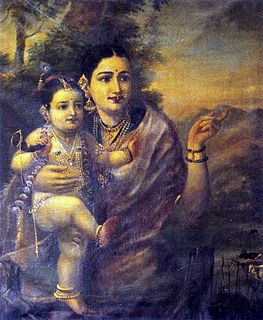 W
WKrishna Janmashtami, also known simply as Janmashtami or Gokulashtami, is an annual Hindu festival that celebrates the birth of Krishna, the eighth avatar of Vishnu. It is observed according to the Hindu lunisolar calendar, on the eighth day (Ashtami) of the Krishna Paksha in Bhadrapada, which overlaps with August or September of the Gregorian calendar.
 W
WMaha Shivaratri is a Hindu festival celebrated annually in honour of the god Shiva. The name also refers to the night when Lord Shiva performs the heavenly dance. There is a Shivaratri in every luni-solar month of the Hindu calendar, on the month's 13th night/14th day, but once a year in late winter and before the arrival of Summer, marks Maha Shivaratri which means "the Great Night of Shiva".
 W
WMakar Sankranti or Uttarayan or Maghi or simply Sankranti, also known in Bangladesh as Poush Sankranti, is a festival day in the Hindu calendar, dedicated to the deity Surya (sun). It is observed each year the day Sun enters the Capricorn zodiac which corresponds with the month of January as per the Gregorian calendar. It marks the first day of the sun's transit into Makara rashi (Capricorn).
 W
WNarak Chaturdashi is a Hindu festival, which falls on Chaturdashi of the Krishna Paksha in the Shalivahan Shak Hindu calendar month of Kartik. It is the second day of the five-day-long festival of Deepavali/Diwali. The Hindu literature narrates that the asura (demon) Narakasur was killed on this day by Krishna and Satyabhama. The day is celebrated by early morning religious rituals and festivities follow on.
 W
WNavaratri is a Hindu festival that spans nine nights and is celebrated every year in the autumn. It is observed for different reasons and celebrated differently in various parts of the Hindu Indian cultural sphere. Theoretically, there are four seasonal Navaratri. However, in practice, it is the post-monsoon autumn festival called Sharada Navaratri that is the most observed in the honour of the divine feminine Devi (Durga). The festival is celebrated in the bright half of the Hindu calendar month Ashvin, which typically falls in the Gregorian months of September and October.
 W
WNuakhai or Navakhai or is an agricultural festival mainly observed by people of Western Odisha and Southern Chhattisgarh in India. Nuakhai is observed to welcome the new rice of the season. According to the calendar it is observed on panchami tithi of the lunar fortnight of the month of Bhadrapada or Bhadraba (August–September), the day after the Ganesh Chaturthi festival. This is the most important social festival of Western Odisha and adjoining areas of Simdega in Jharkhand, where the culture of Western Odisha is much predominant because there are so many things learn about agriculture with Hunan behavior also, nuakhai is very big festival and a unique festival also that's why every Indian knowing to Nuakhai History if you love any food then.
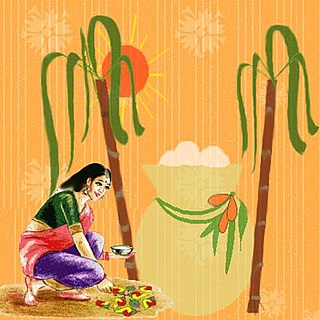 W
WPongal, is also referred to as Thai Pongal, is a multi-day Hindu harvest festival of South India and Srilanka, particularly in the Tamil community. It is observed at the start of the month Tai according to Tamil solar calendar, and this is typically about January 14. It is dedicated to the Hindu sun god, the Surya, and corresponds to Makar Sankranti, the harvest festival under many regional names celebrated throughout India. The three days of the Pongal festival are called Bhogi Pongal, Surya Pongal and Maattu Pongal. Some Tamils celebrate a fourth day of Pongal as Kanum Pongal.
 W
WRama Navami is a Hindu spring festival that celebrates the birthday of Shree Rama, the second avatar of the god Vishnu. Rama is particularly important in the Vaishnavite tradition of Hinduism. The festival celebrates the descent of Vishnu as the Rama avatar, through his birth to King Dasharatha and Queen Kausalya in Ayodhya. The festival is a part of the spring (Vasanta) Navratri, and falls on the ninth day of the bright half of Chaitra, the first month in the Hindu calendar. This typically occurs in the Gregorian months of March or April every year. Rama Navami is an optional government holiday in India.
 W
WRath Yatra is a Hindu festival. In Ahmedabad Rath Yatra has been organized by Jagannath Temple, Ahmedabad on every Asadh-Sud-Bij since 1878. This annual festival celebrates Jagannath, Balrama and Subhdra.
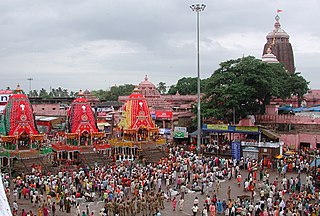 W
WRatha Jatra,(; lit. 'Chariot journey'), is a Hindu festival celebrated in Odisha and Southern portion of Jharkhand for Jagannath and associated Hindu deities.
 W
WUgadi or Yugadi, also known as Samvatsarādi, is the New Year's Day for the states of Andhra Pradesh, Telangana, and Karnataka in India. It is festively observed in these regions on the first day of the Hindu lunisolar calendar month of Chaitra. This typically falls in April month of the Gregorian calendar.
 W
WVasant also known as Basant in Pakistan and Vasant Panchami in northern India. Muslims in Pakistan mark celebrations with kite flying while Hindus in Northern India mark the occasion with "Sarasvati Puja" or worship of "Sarasvati". The Basant festival mainly marks the preparation for the arrival of spring. The festival is celebrated by people in Pakistan and Northern India in various ways, depending on the region. Vasant Panchami for Indian Hindus also marks the start of preparation for Holika and Holi, which take place forty days later. The Vasant Utsava (festival) on Panchami is celebrated forty days before spring, because any season's transition period is 40 days, and after that, the season comes into full bloom.
 W
WVat Purnima is a Hindu celebration observed by married women in North India and in the Western Indian states of Maharashtra, Goa, Kumaon,Gujarat. On this Purnima during the three days of the month of Jyeshtha in the Hindu calendar, a married woman marks her love for her husband by tying a ceremonial thread around a banyan tree. The celebration is based on the legend of Savitri and Satyavan as narrated in the epic Mahabharata.
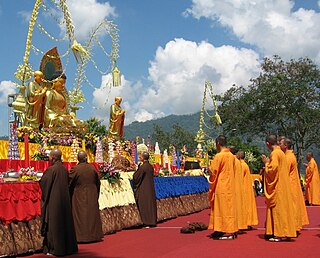 W
WVesak, also known as Buddha Jayanti, Buddha Purnima and Buddha Day, is a holiday traditionally observed by Buddhists in South Asia and Southeast Asia as well as Tibet and Mongolia. The festival commemorates the birth, enlightenment (Nibbāna), and death (Parinirvāna) of Gautama Buddha in Theravada Tibetan Buddhism and Navayana.
 W
WVijayadashami, also known as Dussehra, Dasara or Dashain, is a major Hindu festival celebrated at the end of Navaratri every year. It is observed on the tenth day in the Hindu calendar month of Ashvin, the seventh month of the Hindu Luni-Solar Calendar, which typically falls in the Gregorian months of September and October.
 W
WWangala is also called the festival of "The Hundred Drums", a harvest festival celebrated by the Garo tribe, who live in Meghalaya, Nagaland and Assam in India and Greater Mymensingh in Bangladesh. In this post harvest festival, they give thanks to Misi Saljong the sun god, for blessing the people with a rich harvest. Wangala is celebrated in the months from September to December, with different villages setting different dates for the occasion.
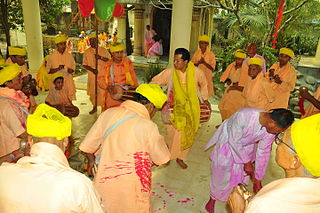 W
WYaosang is a festival celebrated in Manipur for five days in spring, starting on the full moon day of the month of Lamda (February–March). Yaosang is indigenous traditions of the Meitei people. It is considered the most important festival in Manipur. Like Holi, the Hindu Meitei of Manipur play with colours during this fest